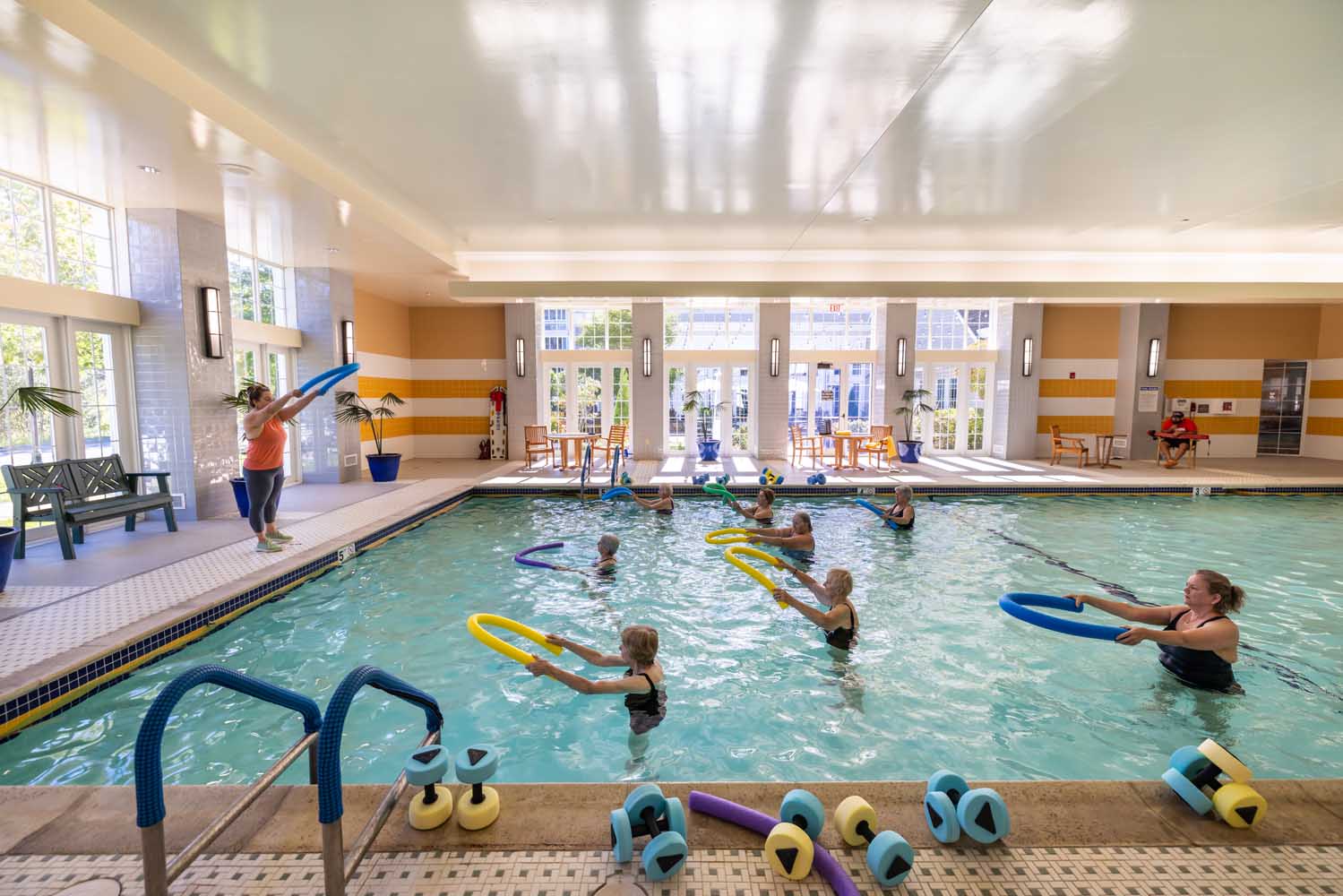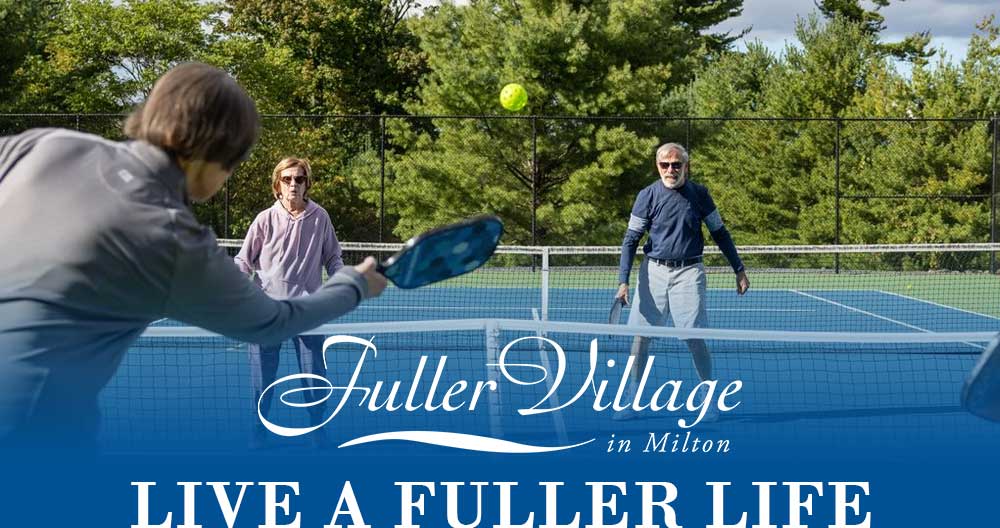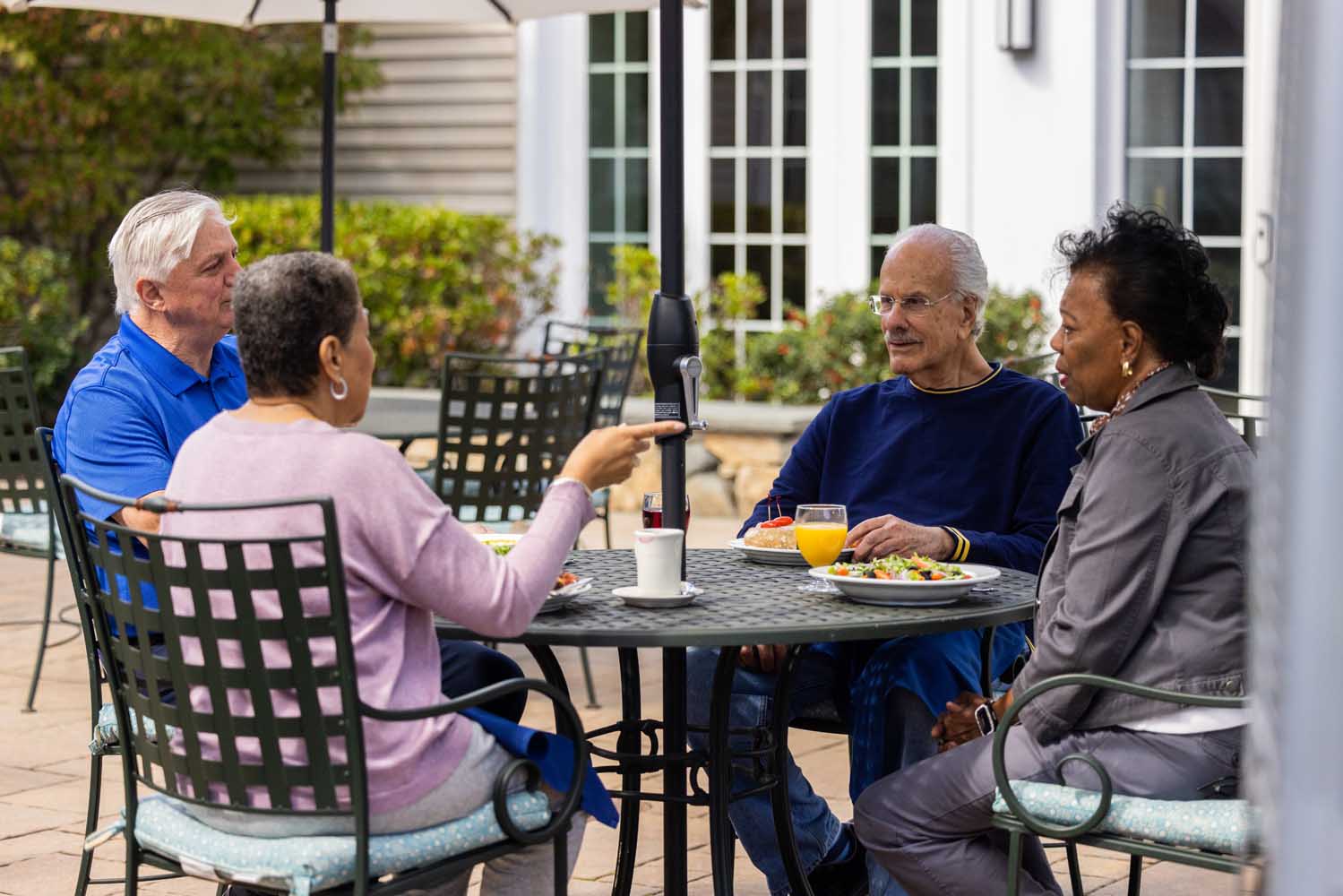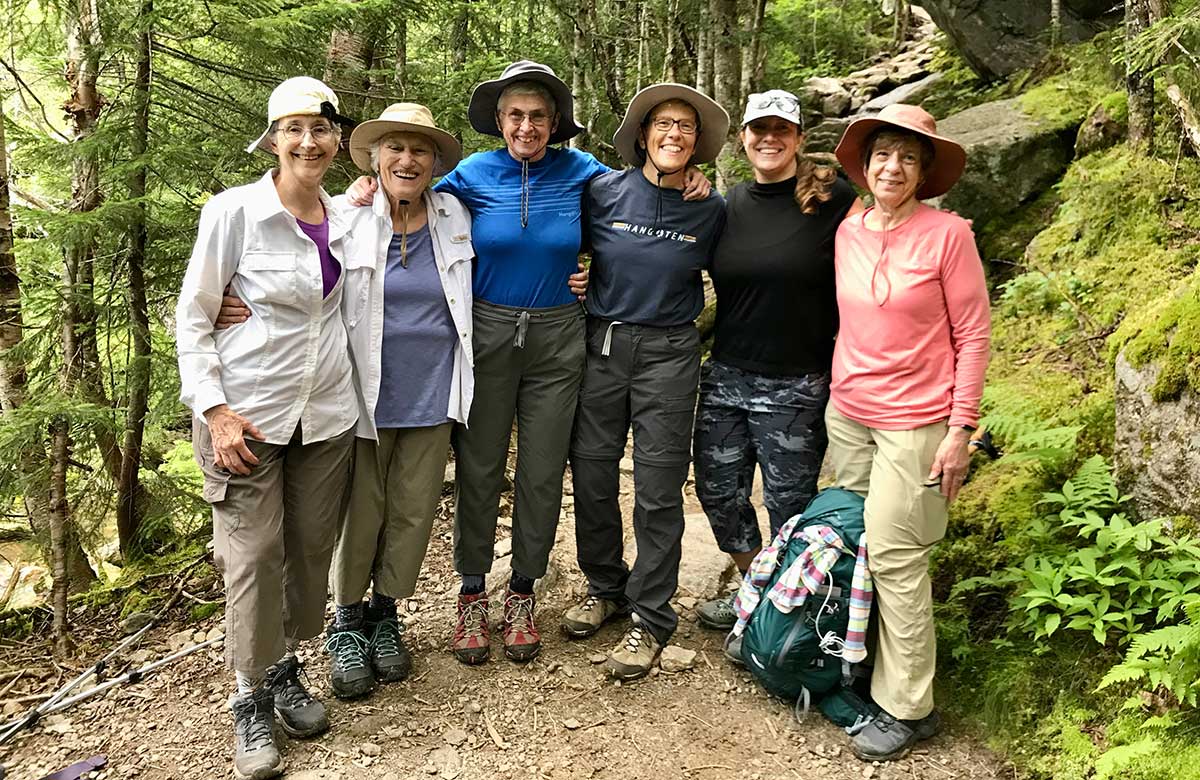Staying active in your golden years is not only possible, but essential for living your best life. It’s about finding activities that bring you joy, keep you moving, and help you maintain your independence. So, whether you’re a seasoned retiree or just entering your golden years, here are some tips that will have you feeling like a spring chicken in no time!
Benefits of Staying Active in Your Golden Years
You’ve probably heard it a million times, but staying active is crucial for older adults. And not just the physical benefits, although those are certainly important. Regular exercise can improve your cardiovascular health, strengthen your muscles, and help you maintain a healthy weight. But the benefits go way beyond that.
Improved Physical Health
Let’s start with the obvious: physical activity is good for your body. It can help you maintain your independence as you age by improving your balance, flexibility, and overall fitness level. Studies have shown that regular exercise can even reduce the risk of chronic diseases like heart disease, diabetes, and certain types of cancer. And if you’re dealing with arthritis or other aches and pains, low-impact exercises like swimming or tai chi can help you stay active without putting too much stress on your joints.
Enhanced Mental Well-being
But the benefits of staying active aren’t just physical. Exercise can also do wonders for your mental health. It’s a great way to reduce stress, improve your mood, and boost your self-esteem. Plus, learning new skills and challenging yourself with different types of physical activity can help keep your mind sharp as you age. A study by the Harvard Health Letter found that regular exercise can even help improve memory and thinking skills in older adults.
Increased Social Engagement
Another benefit about staying active in your golden years is staying connected with others. Joining a walking group, taking a dance class, or even just meeting up with friends for a round of golf or pickleball can help combat feelings of loneliness and isolation that are all too common among older adults. Social engagement is key to maintaining a high quality of life as you age, and exercise is a great way to foster those connections.
Better Sleep Quality
If you struggle with insomnia or other sleep issues, regular physical activity might be just what the doctor ordered. Exercise can help regulate your sleep patterns and improve the quality of your rest. Just be sure to finish your workout at least a few hours before bedtime, as exercising too close to sleep can actually have the opposite effect.
Maintaining Independence
Perhaps most importantly, staying active can help you maintain your independence as you age. By keeping your body strong and your mind sharp, you’ll be better equipped to handle the challenges of daily life without relying on others for assistance. And that sense of autonomy can go a long way in promoting a positive outlook and a high quality of life in your golden years.
Types of Physical Activities for Seniors
So, you’re convinced that staying active is important. But what kinds of exercises should you be doing? The good news is, there are plenty of options out there for seniors of all fitness levels.
Low-Impact Exercises
If you’re just starting out or dealing with joint pain, low-impact exercises are a great place to begin. Walking is one of the simplest and most effective forms of exercise out there. It’s easy on the joints, can be done almost anywhere, and doesn’t require any special equipment. Other low-impact options include swimming, cycling, and using an elliptical machine.
Strength Training
Don’t be intimidated by the idea of lifting weights. Strength training is an important part of any exercise routine, and it’s especially crucial for older adults. As we age, we naturally lose muscle mass and bone density. But resistance training can help counteract those effects. You don’t need fancy equipment or a gym membership to get started. Simple exercises like squats, lunges, and push-ups can be done at home using just your body weight. Or you can invest in some basic equipment like resistance bands or light dumbbells.
Balance and Flexibility Exercises
Falls are a major concern for many older adults, but practicing balance exercises can help reduce your risk. Tai chi and yoga are both great options for improving balance and flexibility. These gentle, low-impact activities can also help reduce stress and promote relaxation. If you’re new to these practices, look for beginner-level classes specifically designed for seniors.
Cardiovascular Activities
Cardiovascular exercise is important for maintaining heart health and improving endurance. But that doesn’t mean you have to run a marathon. Brisk walking, dancing, and swimming are all great options for getting your heart rate up without putting too much stress on your joints. Aim for at least 30 minutes of moderate-intensity cardio most days of the week.
Overcoming Barriers to Staying Active
Of course, staying active isn’t always easy, especially as we age. But with a little creativity and determination, you can find ways to overcome common barriers and make exercise a regular part of your routine.
Addressing Physical Limitations
If you’re dealing with chronic health issues or physical limitations, it’s important to talk to your doctor before starting any new exercise routine. They can help you develop a plan that’s safe and effective for your individual needs. Don’t be afraid to start small and work your way up gradually. Even just a few minutes of activity each day can make a big difference over time.
Finding Enjoyable Activities
One of the keys to sticking with an exercise routine is finding activities that you actually enjoy. If you dread going to the gym, chances are you won’t keep it up for very long. Instead, look for activities that bring you joy and fit your lifestyle. Maybe that means joining a local sports league, taking up gardening, or simply going for a daily walk with a friend. The more you enjoy your workouts, the more likely you are to stick with them long-term.
Staying Motivated
Staying motivated can be tough, especially if you’re exercising alone. One way to stay accountable is to find a workout partner or join a fitness class. Having someone to share your goals and progress with can be a great source of encouragement and support. You can also try setting small, achievable goals for yourself and rewarding yourself when you reach them.
Incorporating Activity into Daily Routine
If the idea of carving out time for a dedicated workout seems daunting, try finding ways to incorporate more activity into your daily routine instead. Take the stairs instead of the elevator, park farther away from your destination, or do some stretches while watching TV. Every little bit counts, and these small changes can add up to big benefits over time.
Creating a Sustainable Exercise Routine
The key to reaping the long-term benefits of exercise is to make it a consistent part of your lifestyle. But how do you create a sustainable routine that you can stick with for the long haul?
Setting Realistic Goals
Start by setting realistic goals for yourself. Instead of aiming to run a marathon right off the bat, focus on gradually increasing your activity level over time. Maybe your goal is to walk for 30 minutes a day, three times a week. Once you’ve achieved that, you can set a new goal to work towards. Remember, progress is more important than perfection!
Varying Activities
Variety is the spice of life, and that goes for exercise too. Mixing up your workouts can help prevent boredom and keep you motivated. Try incorporating different types of activities into your routine, like strength training, cardio, and flexibility exercises. You can also switch up your environment by exercising outdoors or trying a new fitness class.
Listening to Your Body
As you age, it’s important to listen to your body and respect its limits. If something doesn’t feel right or causes pain, stop doing it and consult with your doctor. It’s also important to give yourself adequate rest and recovery time between workouts. Overtraining can lead to injury and burnout, so be sure to schedule in some rest days and listen to your body’s cues.
Combining Exercise with a Healthy Diet
Finally, remember that exercise is just one piece of the healthy aging puzzle. To truly optimize your health and well-being, it’s important to combine regular physical activity with a balanced diet. Focus on whole, nutrient-dense foods like fruits, vegetables, lean proteins, and whole grains. And don’t forget to stay hydrated by drinking plenty of water throughout the day. Staying active in your golden years may take a little extra effort and planning, but the benefits are well worth it. By incorporating regular exercise into your routine and finding activities that bring you joy, you can improve your physical health, mental well-being, and overall quality of life.
Key Takeaway:
Staying active as you age is key to your physical and mental health, offering benefits like improved balance, reduced chronic disease risk, better mood, and enhanced social connections. Start with activities you enjoy and mix it up to keep things interesting. Remember to listen to your body and combine exercise with a healthy diet for the best results.
An opportunity to live a fuller life
At Fuller Village in Milton, MA, staying active is all about finding what works for you. It’s not about comparing yourself to others or trying to be something you’re not. It’s about embracing this new chapter of your life and making the most of every moment.
Living a “fuller life” at Fuller Village defines the essence of the community. From a fitness and wellness program that includes an indoor heated pool, tennis, pickleball and bocce courts, yoga studio and fitness center to a function room that hosts lectures, musical performances, dances and more, socializing at Fuller Village encompasses every facet of one’s life.
Staying active is about more than just physical health – it’s about keeping your mind and emotions in top shape too. Surround yourself with people who lift you up, take on activities that keep your brain engaged, and be a lifelong learner.
You’ve got the power to make your golden years truly shine. Embrace this time with open arms and a heart full of enthusiasm. The world is ready to be amazed by all that you have to offer, so go out there and make it happen! Fuller Village welcomes the opportunity to show you what it could mean for you to truly live a fuller life.





